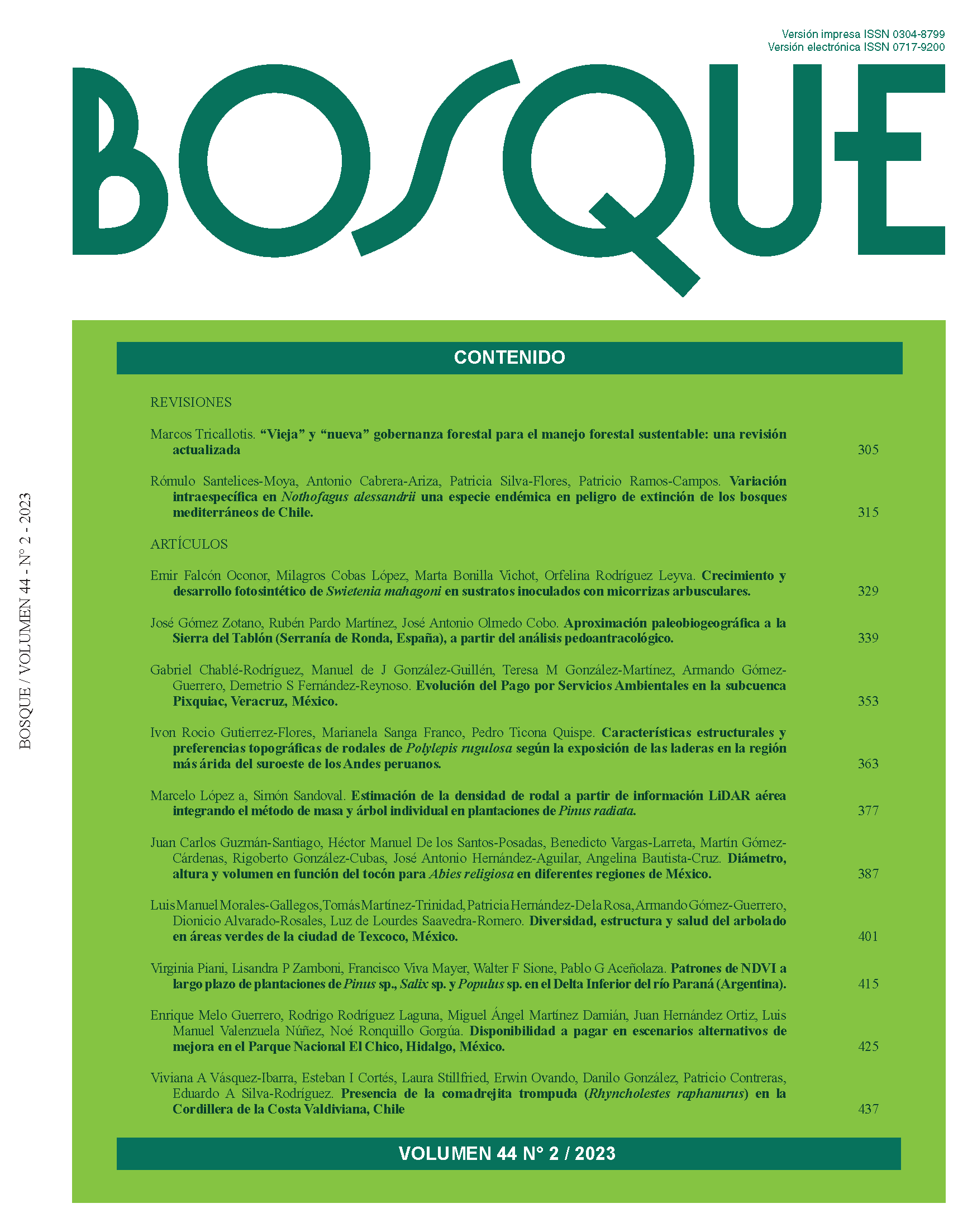“Old” and “new” forest governance for sustainable forest management: an updated review
Main Article Content
Abstract
Sustainable forest management (SFM) is a construct that entails the use of forest resources by multiple actors in a way that avoids their degradation and depletion. Achieving SFM has been a central concern for most countries in order to address deforestation and unsustainable forestry practices. The aim of this review was to analyse traditional or “old” as well as “new” forest governance approaches that have been employed by state regulators and private actors, in terms of their main characteristics and implications for SFM. Classical forest governance, in which state actors predominate, and their most relevant policy instruments such as command- and-control and economic approaches, have not been sufficient to achieve SFM goals due to their lack of credible enforcement mechanisms. Therefore, new types of forest governance, many grouped under corporate social responsibility (CSR) and industry self-regulation (ISR) concepts, arose to address these limitations. Most of them are characterised by the predominance of non-state actors in their rule-setting and enforcement. On the other hand, community-based forest management (CBFM) has also grown in popularity in the last few decades as a policy option in the new forest governance model. However, the effectiveness of a particular policy instrument in addressing sustainability issues has depended on the specific context in which a particular policy instrument is developed. Overall, new forest governance policy instruments have not replaced traditional policy instruments. Rather, they have complemented them, particularly through their enforcement mechanisms, in their efforts to achieve collective sustainability goals for the benefit of the entire society.

